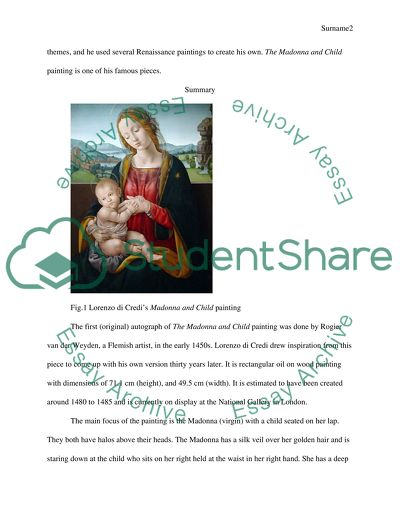Cite this document
(A Visual Analysis in Interpreting and Understanding Artworks Assignment Example | Topics and Well Written Essays - 1500 words, n.d.)
A Visual Analysis in Interpreting and Understanding Artworks Assignment Example | Topics and Well Written Essays - 1500 words. https://studentshare.org/visual-arts-film-studies/1679590-a-visual-analysis-in-interpreting-and-understanding-artworks
A Visual Analysis in Interpreting and Understanding Artworks Assignment Example | Topics and Well Written Essays - 1500 words. https://studentshare.org/visual-arts-film-studies/1679590-a-visual-analysis-in-interpreting-and-understanding-artworks
(A Visual Analysis in Interpreting and Understanding Artworks Assignment Example | Topics and Well Written Essays - 1500 Words)
A Visual Analysis in Interpreting and Understanding Artworks Assignment Example | Topics and Well Written Essays - 1500 Words. https://studentshare.org/visual-arts-film-studies/1679590-a-visual-analysis-in-interpreting-and-understanding-artworks.
A Visual Analysis in Interpreting and Understanding Artworks Assignment Example | Topics and Well Written Essays - 1500 Words. https://studentshare.org/visual-arts-film-studies/1679590-a-visual-analysis-in-interpreting-and-understanding-artworks.
“A Visual Analysis in Interpreting and Understanding Artworks Assignment Example | Topics and Well Written Essays - 1500 Words”. https://studentshare.org/visual-arts-film-studies/1679590-a-visual-analysis-in-interpreting-and-understanding-artworks.


